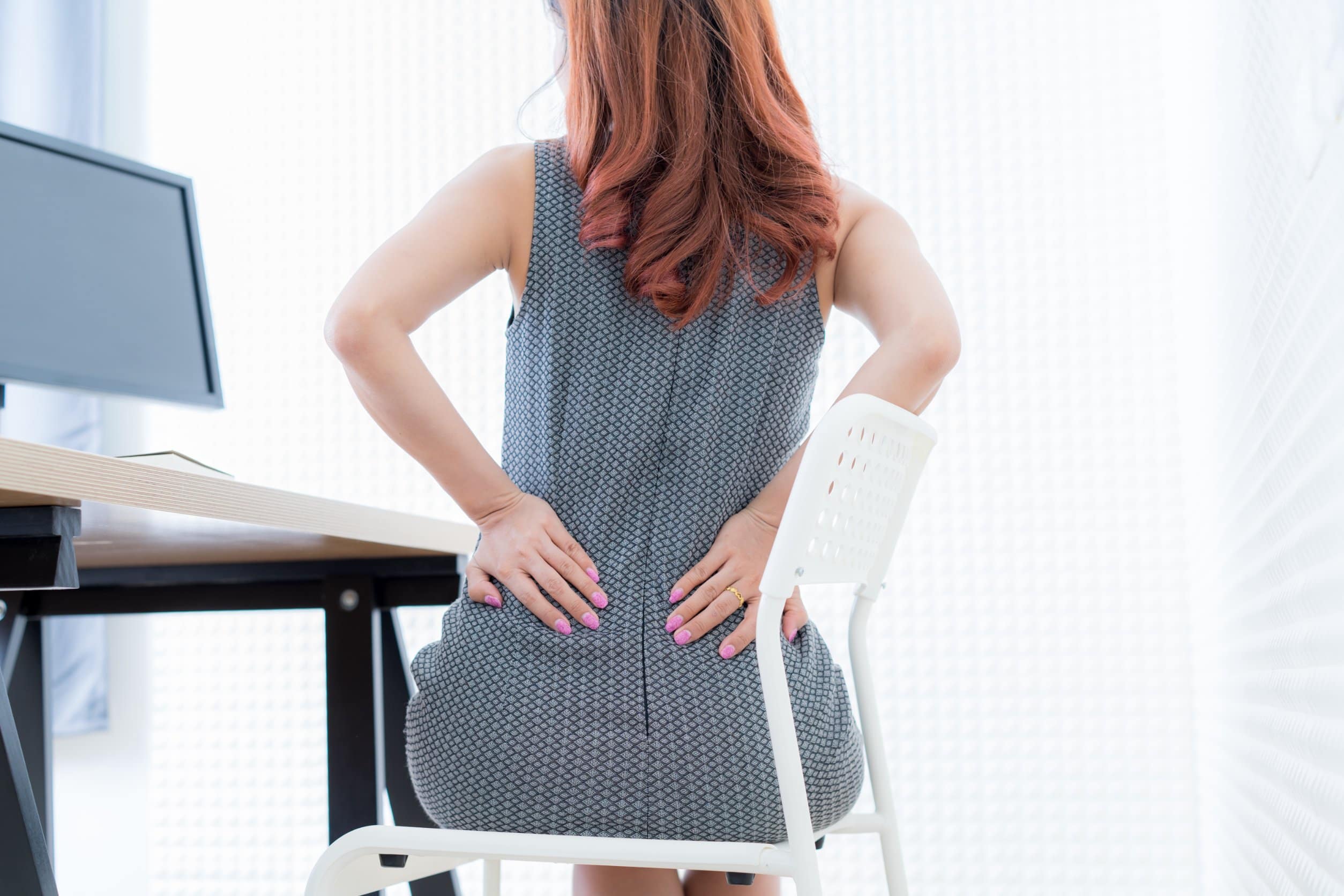Just like all our movements, sitting requires the activation and relaxation of certain muscles, and it stresses different bones. The parts of the body that are most studied regarding sitting posture is the spine and back (lumbar region) and the pelvis. The hamstring muscles also influence sitting posture, however.
The biomechanics of sitting can change significantly depending on the chair type and posture. When we stand freely, all of our weight is transferred to the floor through our feet. When we sit down, most of the weight transfer to the floor is shifted from our feet to the seat pan, armrests, and backrests. This transfer gives our feet a feeling of relief.
Lumbar Region
When we sit, we naturally tend to slouch a little to feel relief from standing. Our lumbar region is concave and curved toward the stomach, giving the appearance of “slouching.” In this posture, technically called lordotic, the vertebrae and discs are thicker toward the front of the body rather than toward the back of the body to cushion the increased pressure on this part of the vertebrae. Also, the sacrum, which is the lower part of the spine fixed to the pelvis, is angled forward.
Pelvis
Since the sacrum is connected to the pelvis, any rotation of the pelvis affects the vertebrae of the spine.
If the pelvis is rotated forward slightly (b), the lumbar spine curves to better maintain an upright posture. However, a backward tilt can lead to an increased flattening of the lumbar spine. This can increase kyphosis (sometimes referred to as hunchback or roundback), which is a spinal disorder where the spine has an outward curve and this results in the development of abnormal rounding of the upper back (c).
As you can see in the image below, compared to relaxed standing, both upright and slouched sitting have smaller angles. The smaller the angle in prolonged sitting, the bigger the risk for back pain and injury.
Hamstrings
The hamstring muscles also influence sitting posture and the position of the spine. They extend from just above the knee to the pelvis, meaning they cross the hip and knee joints. As a result, the extensibility and the strength of hamstrings have an impact on back posture as well.
In fact, in people who have lower back pain related to working for long periods in front of a computer, their hamstring muscles tend to have increased activity. This means that people with back pain tended to have more tense hamstring muscles than those without back pain.
One study examined the effects of stretching the hamstrings in the workplace on posture. Researchers found that hamstring stretching exercises effectively increased hamstring extensibility, resulting in a more aligned spinal curve and a more favorable pelvic tilt.
Another study found that athletes who had injured their hamstrings had poorer lower back posture. Both of these studies are examples of the correlation between hamstring health and posture.
Sitting Postures
Experts tend to categorize sitting postures into three types: anterior, posterior, and middle.
In the anterior (forward leaning) posture (A and B in the figure below), the center of gravity is placed in front of the ischial tuberosities (“butt bones”) over the thighs, which can cause strain in the lower back. Here, the floor supports more than 25 percent of body weight.
In the posterior (backward leaning) posture, the center of gravity is behind the ischial tuberosities. This is the posture preferred for resting, but over time it can cause pain in the pelvis.
In the middle (relaxed, unsupported) posture, the center of gravity is directly above the ischial tuberosities. The floor supports 25 percent of body weight, which is ideal, and the spine is straight or only slightly curved forward. This is the ideal sitting position for posture and back health.
Since sitting statically for long periods of time is linked to low back pain, researchers have examined the connection between different postures and sitting styles and the development.
One study examined the impact of twenty minutes of sitting in different ways on trunk range of motion, muscle activity, and proprioception, which is the ability to feel how your body is oriented in the space around you.
The first sitting style was static slouched (unmoving with the spine curved forward), the second style was upright (unmoving with muscles activated to sit upright), and the third style was supported sitting with a backrest. The study found that the slouched position had the lowest activation of the abdominal muscle.
This study illustrates why it is important to remain with your back straight up, regardless of the seat of choice.








